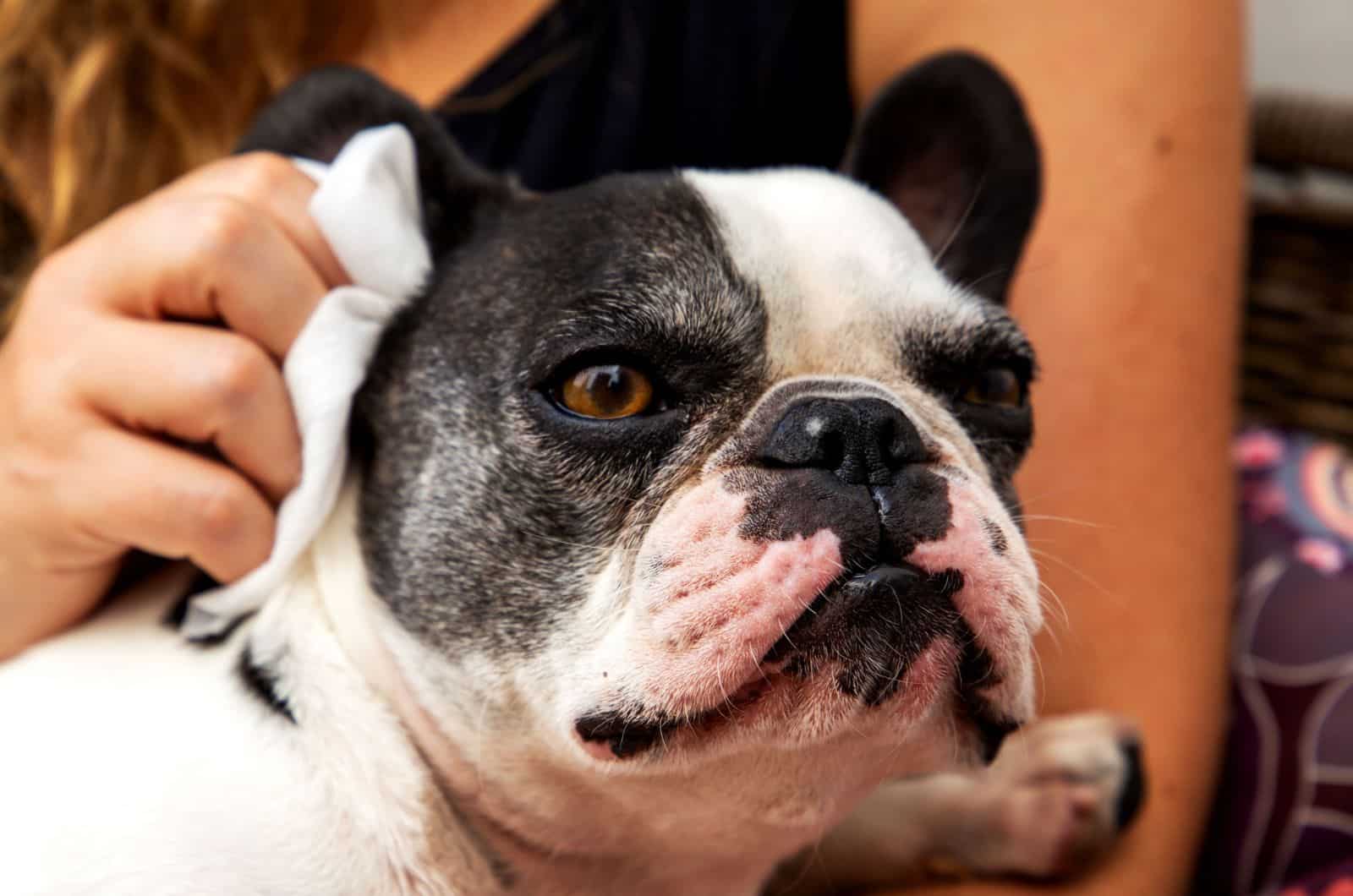Conditions manifesting themselves as a white spot on dog’s nose can make you think your dog broke out the Christmas decor a couple of months too early. It is not as intense as Rudolph’s nose, but it can take you by surprise.
So, now you are wondering why those spots are on your dog and will not come off. You tried cleaning it to no avail. You abrakadabrad the crap out of it, and it is still there. Worry starts creeping in. Is it serious or harmless? Maybe a skin condition? Oh god!
Luckily, when you started researching the topic, Google served you this article as a brain relaxant. Here is a list of possible conditions and treatments.
The Following Things Cause White Spot On Dog’s Nose
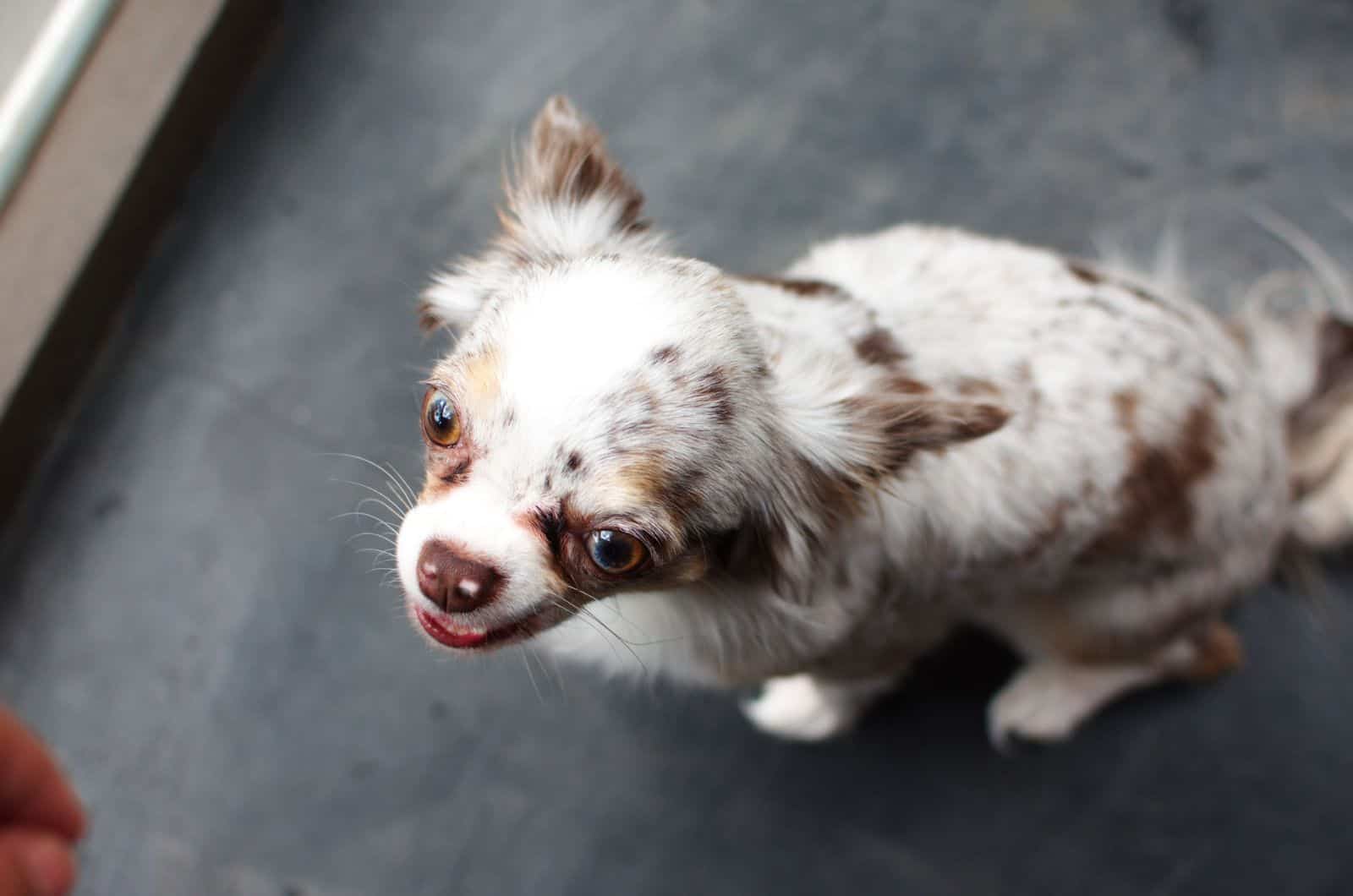
I know the list seems long, but it is actually quite short. Good news, right? Yes, mostly good news. There are some conditions that can imply serious underlying health issues, and then others that will be as plain as day.
Just to name a few of them before diving into deeper detail, here are some conditions that can lead to white spots on your dog’s nose: pimples, vitiligo, snow nose, discoid lupus erythematosus, nasal hyperkeratosis, kennel nose and pemphigus foliaceus.
Many of these ailments are related to pigmentation problems or basic infections that can be solved with antibiotics. However, a good few symptoms can present themselves in both minor and serious diseases unrelated to pigment such as autoimmune disease.
Warning: some ridiculous condition names found a spot on this list. Laughing is forbidden because reading about them will reassure you that your dog does not have them. Fingers crossed.
As Simple As A Nasty Pimple
Oh yes. Your dog can have acne too. The pimple formation process is basically identical to the one in humans. For that reason, there are several possible causes of dog acne.
One would be hair follicles growing through the skin. The condition is called folliculitis and can “transform” into a more severe case of infection. Folliculitis itself is caused by ingrown hairs and in most cases manifests itself as red spots.
When the inflammation caused by the hair stays untreated for a long enough period, furunculosis might set in. This is an infection of the inflamed area that generally becomes painful and filled with white pus. Everyone knows these abominable things called whiteheads.
Their favorite hangout spot is the muzzle, particularly on the lips. If your dog has a short coat and is fairly young, it will be more prone to whiteheads.
While the pustule is still in its “infancy”, treatment includes applying benzoyl peroxide. This medication is used for clearing up acne in humans too and is safe for dogs.
If the infection was active for an extended period of time, you will have to apply it for several weeks or until it clears up. Just like people, dogs can develop chronic acne. Your vet will probably tell you to use benzoyl peroxide to prevent acne from sprouting up again.
If this over the counter solution does not do it, NSAIDs can be used to reduce the swelling on the inflamed area. In any case, consult your veterinarian on what the best course of action would be.
Note that, if left untreated, pimples can lead to more serious conditions. The fungal or bacterial infection can infiltrate the dog’s blood and infect other organs such as the heart, lung or kidneys. In this case, antibiotics or antifungal medication will be added to the treatment.
My Dog’s Spots Got Nowhere To Go, It Must Be Vitiligo
Time to have that pigmentation talk. There is a lot to say about vitiligo, so get comfortable. It is a skin condition that causes the dog’s skin to lose pigment. The process of losing pigment is, obviously, called depigmentation.
This occurs when the melanocytes (cells that give skin and hair color) start dying for whatever reason. Both skin and hair can become white, so do not be shocked when you see your dog going “gray” in addition to having white spots on the nose.
Vitiligo can present itself as generalized vitiligo or focal vitiligo. I know what you are thinking: Yay, there are two types… The generalized version can appear anywhere on the body and is generally spread out. Focal vitiligo is also known as snow nose. Scroll down to read about it.
Snow Nose, Oh No It Froze
Focal vitiligo, as the name suggests, is concentrated in one spot. In dogs this spot is of course the nose. Most dog breeds have a black nose their entire life, so white spots on a dark nose will not be hard to spot (no pun intended).
The progression of the disease follows the dog’s aging — the older your dog gets, the fewer melanocytes it will have. This will, in turn, cause discoloration of the nose.
In some dog breeds, this will not be a snow white color but rather pale pink. I do bring positive news. Your dog’s body might be able to reverse the process of depigmentation. If it does not, it is no big deal because vitiligo is harmless.
Dog noses are not the only target for discoloration. Vitiligo can spread to the lips or the area around the eyes. With focal vitiligo, though, this is not frequent but not impossible.
The condition is usually congenital and hereditary. Certain dog breeds like the Labrador retriever, Golden retriever, Doberman pinscher, Siberian husky, Dachshund, Akita and German shepherd are more susceptible to vitiligo.
Uh-Oh, Underlying Health Problem
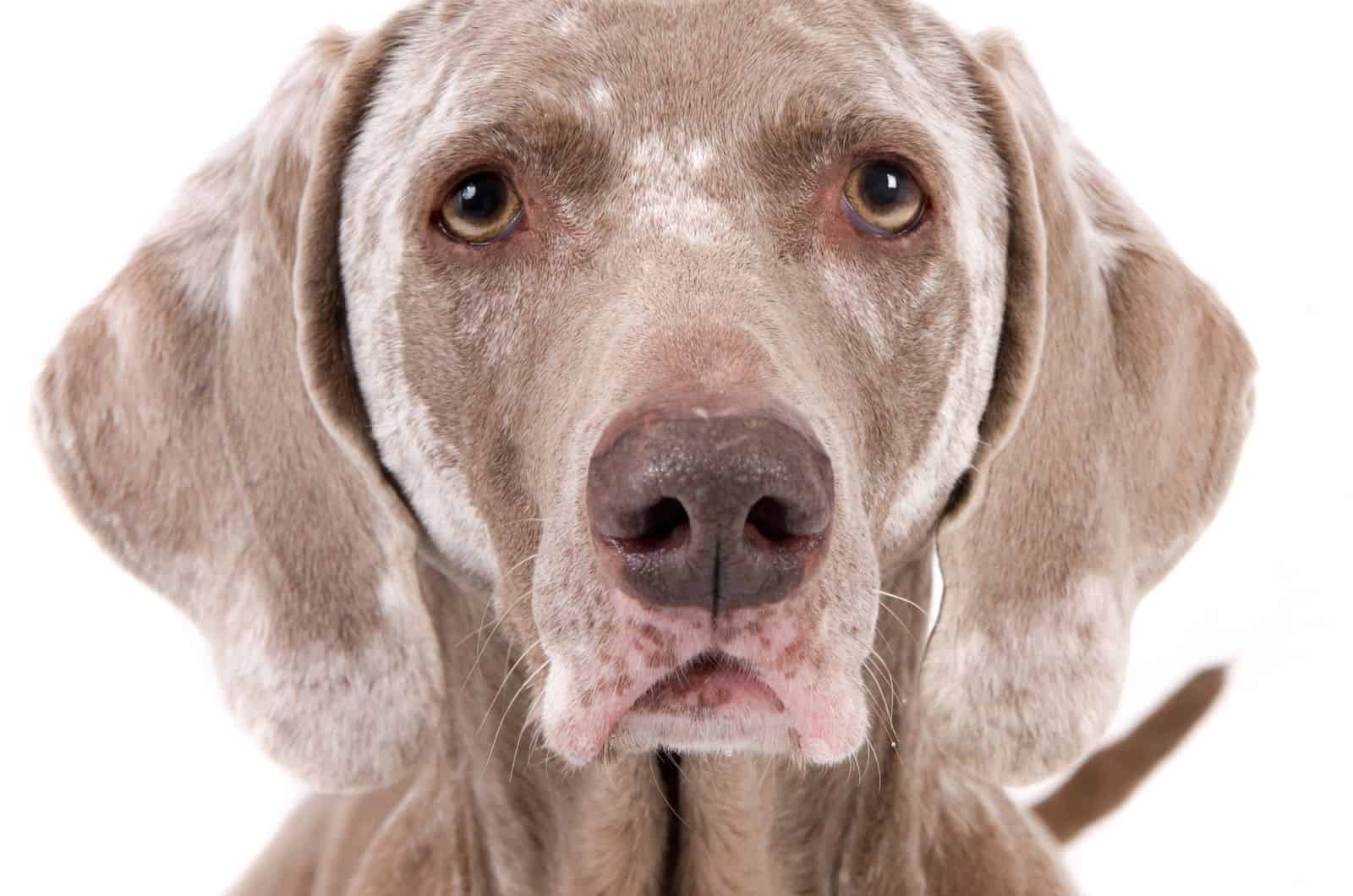
As we already saw, vitiligo is most frequently congenital. There are other reasons vitiligo can start killing off that beautiful color from your dog’s skin and coat.
One common but entirely valid reason is stress. Rescue dogs can have very hard lives, and the accumulated stress can take a toll on them. Vitiligo does love a high level of stress hormone.
Feeling stressed often happens when your dog suffers a bad injury. Moving house or extreme weather like floods and hurricanes can also contribute to developing vitiligo.
Autoimmune dermatosis and vitiligo go hand in hand. Dogs with AID will most often develop the generalized type of vitiligo but it might start off as focal at first. If you notice discoloration, the best thing to do would be scheduling an appointment at the vet’s office.
The diagnosis will determine treatment options. A cure for vitiligo does not exist, but managing the autoimmune can at least help stop the spread of white spots.
The depigmentation itself is not dangerous or harmful for the dog, but taking your dog to the veterinarian for tests is a precautionary measure.
Insults In Latin — Discoid Lupus Erythematosus
You must have heard of lupus from one of the episodes of House M.D. I noticed a pattern with medical conditions that cause a white spot on dog’s nose: different types of autoimmune diseases seem to hijack melanin cells.
The melanin cells are relevant to our topic, but know that lupus can attack any other type of cell. Dogs, just like humans, that suffer from lupus can have an increased risk of cancer.
A study conducted by the UMass Chan Medical School indicated that twelve genes were found in common between dogs, mice and humans, and they all showed potential for activating DLE.
DLE can be described as an aggressive and invasive disease that makes the immune system not recognize the cells that are part of the dog’s body. Leukocytes (white blood cells) will latch onto the melanocytes and dissolve them to “protect” the body.
In doing so, it will primarily cause scabbing and lesions, followed by hair loss. Discoloration of the nose, paws or around the eyes in the shape of white spots is not a definitive symptom of DLE. The scabs are a main symptom though.
Lupus can advance pretty fast after being relatively “quiet” for years. A few weeks can mean a life or death situation. Make sure to take your dog for a visit to the vet if you notice scabbing forming without the dog injuring itself.
Treating lupus is tough as the medication used is immunosuppressants. This means that the body will be more exposed to other bacteria and viruses because the immune system is being repressed.
Putting cream on the lesions will help with reducing the symptoms, but more systemic treatment combinations work best in combination with topical steroids.
From the dog owner’s side, there will be things you will be required to do. It mainly includes reducing your dog’s exposure to sun rays (UV). Choice of food will probably be different since the body will be weakened. Your veterinarian will discuss all of this with you.
Breeds such as the Irish setter, Bernese mountain dog, Bulldog or Chow chow are quite a bit more prone to DLE.
The Name Is Hyperkeratosis, Nasal Hyperkeratosis
A symptom very similar to discoid lupus erythematosus’s scabs is present in nasal hyperkeratosis. The dog’s nose can appear very dry and the skin will start breaking. The pores will become wider, thus increasing the chances of bacterial and viral infection.
If, during your dog’s life, it never had a dry nose that has visible pore separation and no injury was sustained that involved the nose, you should call a vet to do some tests for nasal hyperkeratosis.
Keratin forms the building blocks of the epidermis (external layer of the skin). The “hyper” in hyperkeratosis means that it is being overproduced. The surplus keratin causes buildup in the epidermis and causes abnormalities in the anatomy of cutaneous tissue.
If the condition has been ramping up or is not treated in time, the crusty skin can create a thick layer of hardened dead tissue on top of the affected area’s epidermis.
Hyperkeratosis can occur on the paw pads too, but this type of hyperkeratosis does not share the same origin as the nasal variant. An imbalanced gait can cause digital hyperkeratosis and the two types typically occur unrelated to one another.
Autoimmune diseases such as lupus or viral infections such as distemper or parasites like protozoa that cause leishmaniasis can make nasal hyperkeratosis a symptom.
These are conditions that require intensive medication which is why I urge you to have your pet checked out by a vet. If you want to know more about dry noses, read this article on other causes of dry nose in your dog.
Panels of blood work and a skin biopsy will help establish a diagnosis, and subsequently the treatment options. With a diagnosis, your vet will give you pointers about possible solutions and surgery options.
If it is a severe case, and the keratin buildup cannot be removed with ointments, some viable options are cryosurgery, skin peels, dermabrasion or laser therapy. Aftercare and recurrence prevention dictate the use of moisturizers so that the skin is always soft and wet.
You Don’t Have A Kennel But Your Dog Has Kennel Nose
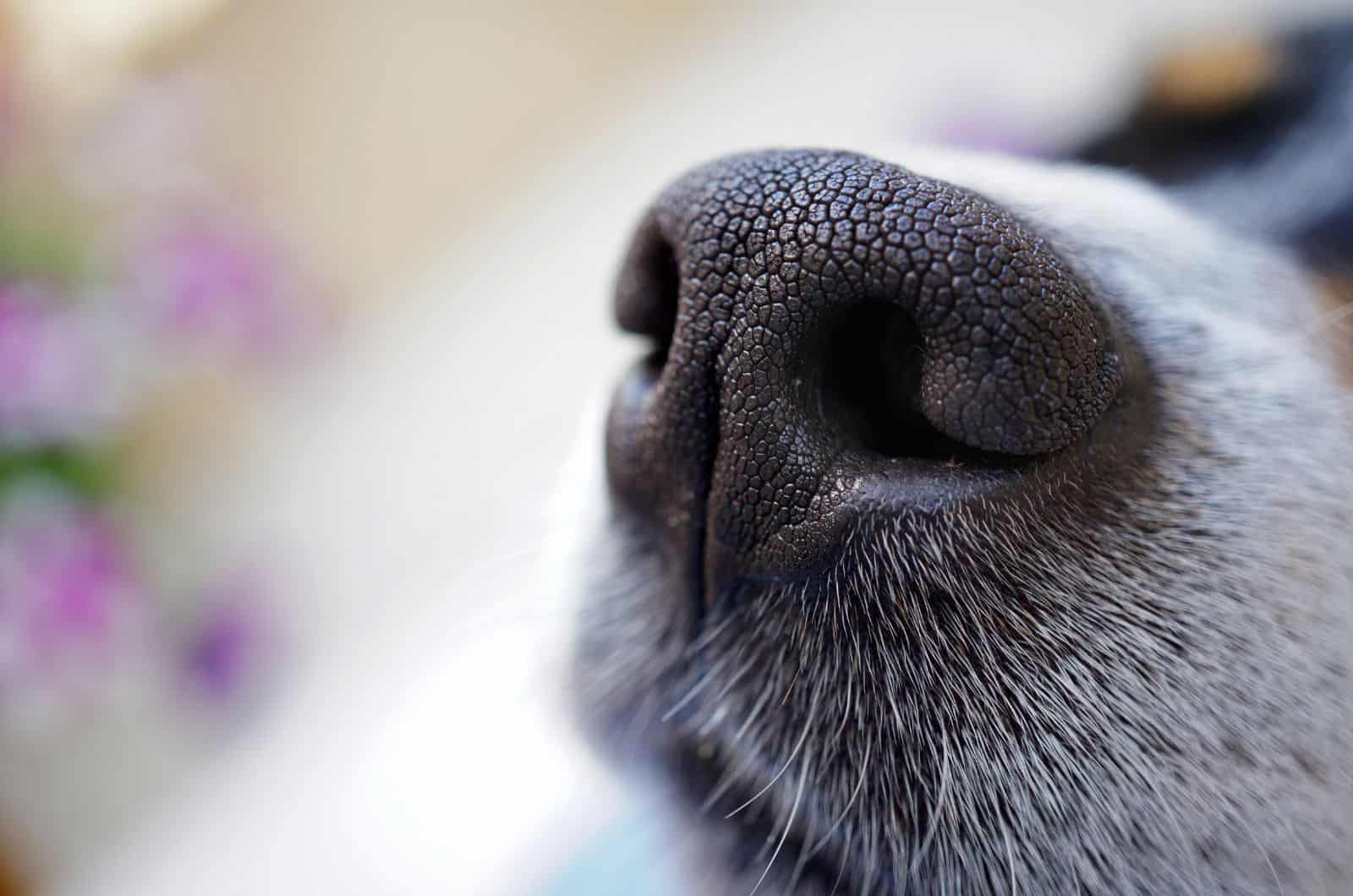
Sometimes the simplest answer is the correct one. Your dog loves gulping its favorite food at any time of the day. Leftover food can sometimes get stuck in the bowl, and where there is food there will be bacteria.
Food that is left to decompose in the food can quickly become a cesspit of invasive bacteria that cannot wait to jump onto the host — your dog.
The muzzle will be in constant contact with the remains of yummy food and adding new food in can be not only unhygienic but also dangerous.
Perhaps you cleaned the food bowl but your dog transferred some of it in the water bowl and now the ideal criteria for bacterial growth have been met.
Germs will multiply exponentially faster in a humid environment that has traces of protein in it, so the water bowl can become a petri dish.
Your dog’s unsuspecting nose will get wet and collect some water bowl pathogens that can cause kennel nose. The name stems from the fact that puppies, while they share the same living space, sometimes live in unsanitary conditions.
Smelling is their way of recognizing things around them, and the nose needs to focus on a particular spot to properly analyze the scent. A puppy’s nose focuses by going very close to the scent origin, and more often than not, it touches and scrapes the area.
The cute little nose starts swabbing all the germs from the ground. Although most animals, including dogs, have an instinctual catalog of smells that their brain deems potentially dangerous, puppies are inquisitive and have the tendency to disregard that genetic alert system.
Other dogs or animals can leave urine and feces on the ground that will then be inhaled and anchored on the tip of the nose. The pathogens will start attacking the skin or simply wait for a microscopic wound to charge into the body.
Such wounds can quickly become infected and start oozing off-white or yellowish discharge. The discharge is a sign that you need to visit the vet. The white spots that form on the nose of your dog can be an infection that requires immediate medical attention.
Whack-A-Doggie
Another cause of kennel nose can be abrasion injury. Whether the dog loves popping its head through the crate holes or is a little bit eager and clumsy, abrasion can cause injury to a dog’s nose. Though, with most abrasion injuries, the nose will get reddish and not white.
For both cases, neosporin is a good topical ointment that can heal superficial wounds. If the germs got into the bloodstream, your canine explorer will have to gulp some antibiotics with the food.
I advise using stainless steel bowls because the steel is less sticky than plastic. It also provides a less hospitable environment for bacteria to grow quickly.
Keep in mind that your dog can spread the pathogens by touching other objects, so a kennel nose is considered contagious. Hygiene and proactiveness will help you avoid a bacterial breakout in your home.
Pemphigus Foliaceus, A Spell Taught At Hogwarts
Let me give you a heads up. This is a nasty one. Though it really is not part of the Hogwarts curriculum, this skin condition can present some very unpleasant symptoms.
I feel like the phrase autoimmune disease has been in every other sentence, yet here I am, about to use it twenty more times. Yes, pemphigus foliaceus is an autoimmune disease.
The gist of it is quite simple — white blood cells attack the connecting tissue between hairs and the epidermis. That is way too simple, so here comes a more scientific explanation.
A hair on any living being has to be connected to the outer skin layer. The bond that performs this function is built out of keratinocytes.
When the connection weakens due to the leukocytes decomposing the bonding material, and the keratinocytes idly float within the skin layers, blisters form on the epidermis.
These blisters are painful and very fragile which means they burst with the slightest of pressure. You can imagine that a dog will not scratch itself gently, so the blister will get punctured. That is almost like an invitation for germs to enter the sore.
A sore will be painful at first, but with exposure to air it will start to crust up and become itchy. Dog nails collect all kinds of germs, so breaking the crust will introduce yet more pathogens into the wound.
Pemphigus foliaceus can be triggered by the genetics of the dog or external factors. Some breeds are more prone to it by default and include the Chow chow, Doberman pinscher, Akita and Bearded collie.
In terms of external factors, some medication like antibiotics can cause pemphigus foliaceus. If you have a brachycephalic dog it will be predisposed for allergy sensitivity which can also kick start this skin condition.
How Is It Diagnosed And What Is The Treatment
The disease is often hard to properly diagnose with an eye examination. The veterinarian will most likely have to do a full blood work panel, send a sample of the tissue for skin biopsy and perhaps keep the dog hospitalized overnight.
If it comes positive for pemphigus foliaceus, the treatment will probably be over the counter corticosteroids and ointments for the wounds.
Since the condition can be caused by quite a few antibiotics in the first place make sure you find a veterinarian willing to dig deeper into the lab tests. Tetracycline and niacinamide have a solid track record of successfully curing pemphigus foliaceus.
Final Remarks
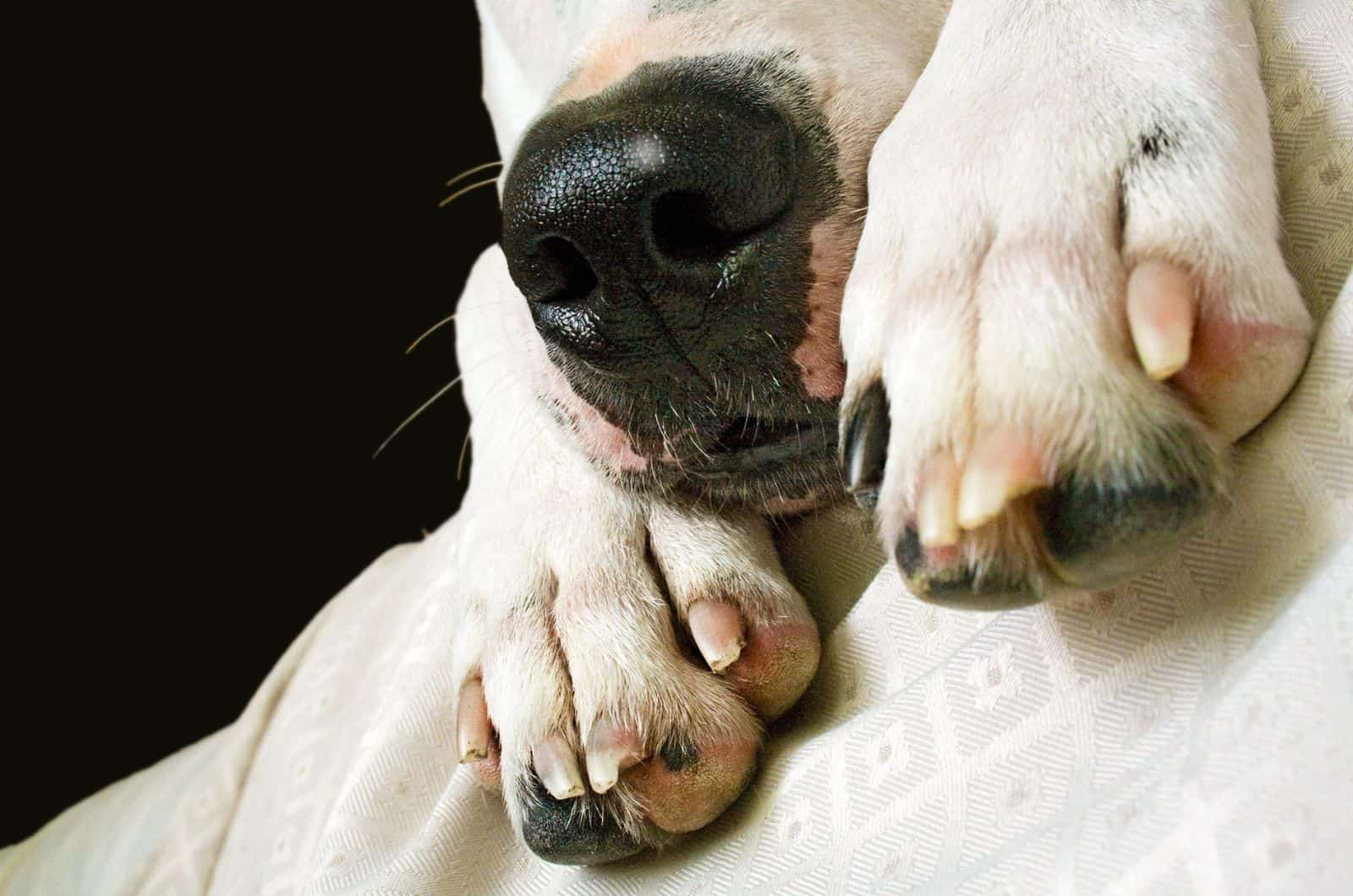
I thought this whole white spot on dog’s nose thing would have fewer serious conditions but I was wrong. Luckily, most of them are extremely rare, and even when they occur, it is the mildest possible version.
In short, the answer to “What does that white spot on my dog’s nose mean?”, is that it dipped its nose into something or was too curious about the yogurt container you left unattended for five seconds.
My father nearly had a heart attack because of food on my dog’s nose. I add cooked rice to my dog’s meals and he just gobbles the food in two smacks of the lips. Being the messy animal that he is, the rice got stuck in his nostrils and all over the nose.
When my father went to wash the bowl he was not wearing his glasses and thought my dog was having a seizure. The rice was falling out of his nose while he was sneezing and my father rushed to try and help him.
When he came closer he saw a handful of rice on the ground and my dog devilishly looking at him. Morals of the story? Do not immediately think of it as a worst case scenario. Take your time in assessing the situation and if it turns out to be a condition, call the vet.
P.S. Do not buy the “natural” ointments made from this oil or that plant. There are a ton of them on Amazon and can be dangerous for your dog. If not dangerous, then they are simply ineffective in dealing with any of the mentioned conditions.
Read Next: Ranking Crusty Dog Nose Causes From Least To Most Serious
